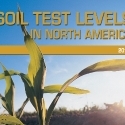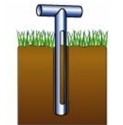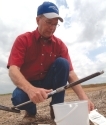08 Feb 2013
Eastern Canada Soil Test K
Soil Test Summaries
Between 2005 and 2010, soil test K has generally declined in all parts of Eastern Canada.
The considerable increase in soils testing less than 80 ppm requires attention, since this level is suboptimal for most crops.The figures below use histograms to show the frequency distribution of soils sampled for the crop years 2001, 2005 and 2010. The soil analysis procedures most frequently used for K in the region are based on the ammonium acetate and the Mehlich-3 extractants. For purposes of this survey, the two are assumed equivalent.
Links below each figure lead to crop nutrient balance trend information.
Between 2005 and 2010, soil test K has generally declined in all parts of Eastern Canada. The considerable increase in soils testing less than 80 ppm requires attention, since this level is suboptimal for most crops. See K balance for Eastern Canada
Owing to a negative K balance, particularly for the 2009 crop, Ontario soil test K distribution has moved downward substantially. Half of the soils tested below the critical level of 120 ppm. See K balance for Ontario
As in Ontario, the cropland K balance in Quebec was very negative for the 2009 crop, and the resulting downward slide in soil test K levels is evident. About 58% of soils tested below the critical level of 125 ppm. See K balance for Quebec
While the overall change in soil K distribution is small, the frequency of soils testing below 80 ppm has increased considerably in Atlantic Canada. Note that no soil sample information was available from Nova Scotia in 2005, but a large number of soils were included from Nova Scotia in 2010, owing to an incentive program for soil testing. See K balance for Atlantic Canada
Soil test K shifted downwards in New Brunswick since 2005. About 55% of soils tested below the critical level of 112 ppm.
Soil test K appears to show little change in Nova Scotia since 2001. About 45% of soils tested below the critical level of 100 ppm.
Soil test K changed little since 2005 in Prince Edward Island. About 72% of soils tested below the critical level of 125 ppm.
Soil test K moved slightly downwards since 2005 in Newfoundland. About 47% of soils tested below the critical level of 90 ppm.
Soil test equivalency assumptions.
The above equivalencies were assumed for the purpose of estimating soil test level frequency distributions across wide areas. They are not recommended for use
in converting soil test values for individual fields for the purpose of determining appropriate rates to apply.



